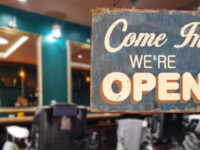The proliferation of Non-Fungible Tokens or NFTs are generating hot debate, but also confusion. We’re seeing people spending hundreds of thousands of dollars on a digital piece of art, and brands like Dolce & Gabbana, Reebok and Gucci making headlines with their NFT investments.
Which begs the question, how do NFTs help drive brand engagement and customer retention?
NFTs: The new driver of loyalty?
As discussed in a recent episode of Let’s Talk Loyalty, loyalty beyond transactions, how marketers can compensate for the loss of third-party cookies and how NFTs (non-fungible tokens) might just be the future of loyalty are hot topics right now.
The movement of NFTs is essentially a digital contract of sorts. It could be art, or it could be something like a specialty Starbucks cup. Say the brand releases 100 NFT badges of specially designed coffee cups, and the people who are a part of its loyalty program can buy those NFTs, becoming privy to certain benefits like a lifetime supply of free coffee.
This is where NFTs become a smart contract between the consumer and brand. It’s something a brand can add to at any time, and even more, it has this added appeal of exclusivity. It makes people feel like they’re part of a special community.
Recently at the Australian Open (AO), Tennis Australia released almost 7000 3D NFT tennis balls that could be purchased with digital cryptocurrency at a rate of 0.067 ETH, or the equivalent of AU$310. Each tennis ball was bespoke and featured its own metadata that was linked to a small 19cm X 19cm plot of tennis court surface.
If the winning shot from any of the 400-plus AO matches landed on the plot, the NFT metadata updated in real-time to highlight the match information while providing the ball’s owner with rewards, ranging from limited-edition wearables to metaverse event access or future benefits.
Basically, at any given time, anyone who bought one of those tennis balls can gain access to things they don’t even know about yet. Tennis Australia could turn around tomorrow and give them a signed tennis racket from their favourite tennis player. There are no rules. NFTs are simply a contract between the consumer and the brand.
It’s diverse, and it’s complicated. But it’s also up to the most creative minds to figure out who to use this technology to drive brand loyalty. I think we’re going to see quite a few brands start taking advantage of NFTs. And I believe that in order to escape the hype around NFTs, it will take assigning them a lifetime value, giving them a form of utility.
Brands need to consider what they will unlock for the consumer. They need to think about what kind of rewards they can tie to NFTs to get people to not only buy them but buy into the idea of them and adopt this new style of loyalty. There’s a lot of opportunity to capitalise on here.
Loyalty no longer an ‘afterthought’ as marketers get back to basics
As marketers, our day job of staying on top of execution is challenging enough. Now we have to do that plus stay on top of data and regulation, challenges and privacy. It’s a lot. And marketers are left wondering how to connect with customers in a cookie-less era.
Marketers love cookies. Brands have been using them for years to track website visitors, improve the user experience and collect data to efficiently target the right ads to the right audiences. Cookies also help to figure out where customers are looking online when they’re not on our websites.
But as we’ve all seen, the death of the third-party cookie is upon us with Google announcing its eradication in 2023. Google is changing its privacy laws. Apple is, too.
So, if third-party advertising is driving the most attribution to your marketing efforts, you have to find a new way to connect with the end consumer. And that’s where loyalty comes in – perhaps the most important tool for marketers in this new era of privacy.
Loyalty is key to driving that connection. If you can package up a great value proposition, whether it be a membership, subscription or punchcard program, customers will give you their information.
In fact, Cheetah’s 2022 Digital Consumer Trends Index revealed that 50 per cent of consumers in Australia are comfortable sharing data about themselves for better service. And 52 per cent are willing to trade personal and preference data to feel part of a brand’s community.
With all these new privacy changes, it’s time for marketers to get back to the basics of marketing. Build a value proposition, find a reason for people to engage, and then acquire them. Create your own customer database that you can gain insights from. It’s Marketing 101. But it’s almost so simple and so basic, that we lose sight of the fundamentals.
It used to be that loyalty was an afterthought. Marketers would be talking about trialling virtual reality, launching NFTs, doing great TV campaigns with a big actor starring in them, etc. Now, NFTs become a smart contract between the consumer and brand. It’s something a brand can add to at any time, and even more, it has this added appeal of exclusivity.
Loyalty done right through relationship marketing
True loyalty is not a points program or a rewards card. These are, of course, tactics that bring brands and customers closer together. But genuine loyalty is an outcome. It’s a goal that can only be achieved by carefully nurturing every relationship you have.
That’s why the true objective of any marketer is to establish an emotional connection between a brand and its customers. This builds long-lasting relationships that keep the customers engaged and coming back again and again.
Achieving this level of connectedness, this emotional loyalty, isn’t easy though. It requires a complex and strategic orchestration of activities. And it takes creativity.
Bakers Delight is an exemplary illustration of loyalty done right. Bakers Delight is a family-owned company that got its start in Victoria in the 1980s. Now, it’s franchised to more than 500 stores across Australia and New Zealand. In March, the company turned to us to help it implement a rewards program to reward its loyal customers.
The solution had to be omnichannel, meaning the customers of Bakers Delight would have a connected experience from online to in-store. Working closely with the Cheetah team, the Dough Getters program was created, with the new loyalty program offering customers rewards and benefits far beyond the simple stamp card.
Now what Bakers Delight has done isn’t necessarily revolutionary, but its execution was just really creative and super cool. The brand has little crumbs in its app. It says fun things like, “You’re on a roll” when you achieve certain goals or, “You don’t just deserve butter, you deserve the best”. I love it. It’s great. It’s those little bits of gold spread throughout that make such an impact.
One month after the Dough Getters pilot launched, the program had more than 200,000 sign-ups, putting it 30 per cent ahead of target. Bakers Delight also saw its members, aka ‘Dough Getters’, spending an average of 25 per cent more per transaction.
Even better, customers are loving the new program. The sign-up process is simple and easy to join, and customers are happy to be getting rewarded. For Bakers Delight, partnering with Cheetah enabled it to transition to a strategy that emphasised a delightful customer experience, customer loyalty, and insights, enabling it to engage customers throughout their lifecycle.
Loyalty beyond ‘transactions’ to ‘interactions’
During COVID, there were a lot of brands who looked at what they were doing and decided they needed to do it in a different way, but also a better way. It became a question of, “How do we stop forcing transactions on our customers?” They didn’t want to be that brand anymore. In the middle of the global pandemic, it especially didn’t feel right, saying, “Hey, you might have lost your job, but continue buying so you can keep your loyalty.”
The Vans family is another perfect example of this concept, which moves away from transactions to interactions. Vans wanted to reward its customers for engagement. It was about connecting their social accounts, referring friends, and sharing photos with the community to name a few. For each interaction, Vans then rewards its customers with points that can be used to redeem loyalty rewards, ranging anywhere from skateboard stickers to a 24-karat gold skateboard ramp.
The beauty of this engagement is that it gives Vans the ability to profile its audience, learning things about them to then leverage for brand partnerships. For example, say Vans’ customers have a great affinity for music; well, that’s a great opportunity for the company to partner with Beats. Or if Vans finds out its customers like pets, it could release some dog stickers or collars. This kind of information transcends the loyalty program. We’re starting to see a big movement where brands are spending more and trying harder to connect with their consumers in new and better ways.
Access the latest Consumer Digital Index Report here.
About the author
Miles Toolin is the Principal Solution Consultant at Cheetah Digital. Passionate, confident and highly motivated, Miles is focused on designing and implementing practical and leading technology solutions for enterprise businesses. His passion for tech allows him to move organisations to the forefront of the technology sector, ensuring that the Business and IT are always aligned.
About Cheetah Digital
Cheetah Digital is a cross-channel customer engagement solution provider for the modern marketer. The Cheetah Digital Customer Engagement Suite enables marketers to create personalized experiences, cross-channel messaging, and loyalty strategies, underpinned by an engagement data platform that can scale to meet the changing demands of today’s consumer. Many of the world’s best brands, including Starbucks, Hilton, Neiman Marcus, Levi’s, and Williams-Sonoma trust Cheetah Digital to help them drive revenue, build lasting customer relationships, and deliver a unique value exchange throughout the customer lifecycle. To learn more, visit www.cheetahdigital.com.











